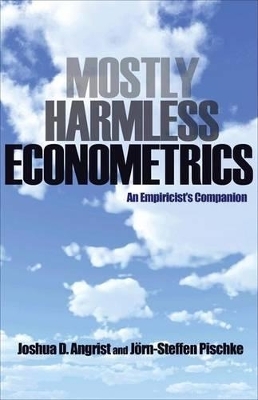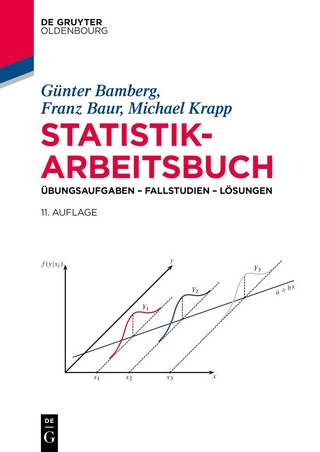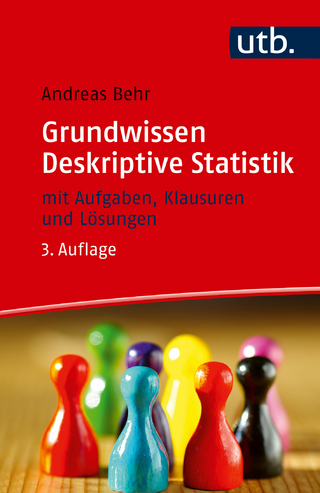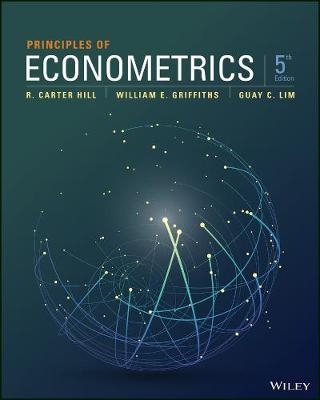
Mostly Harmless Econometrics
Princeton University Press (Verlag)
978-0-691-12034-8 (ISBN)
- Titel ist leider vergriffen;
keine Neuauflage - Artikel merken
The core methods in today's econometric toolkit are linear regression for statistical control, instrumental variables methods for the analysis of natural experiments, and differences-in-differences methods that exploit policy changes. In the modern experimentalist paradigm, these techniques address clear causal questions such as: Do smaller classes increase learning? Should wife batterers be arrested? How much does education raise wages?"Mostly Harmless Econometrics" shows how the basic tools of applied econometrics allow the data to speak. In addition to econometric essentials, "Mostly Harmless Econometrics" covers important new extensions - regression-discontinuity designs and quantile regression - as well as how to get standard errors right. Joshua Angrist and Jorn-Steffen Pischke explain why fancier econometric techniques are typically unnecessary and even dangerous. The applied econometric methods emphasized in this book are easy to use and relevant for many areas of contemporary social science.
This book features: an irreverent review of econometric essentials; focus on tools that applied researchers use most; chapters on regression-discontinuity designs, quantile regression, and standard errors; many empirical examples; and, a clear and concise resource with wide applications.
Joshua D. Angrist is professor of economics at the Massachusetts Institute of Technology. Jorn-Steffen Pischke is professor of economics at the London School of Economics and Political Science.
List of Figures vii List of Tables ix Preface xi Acknowledgments xv Organization of This Book xvii PART I: PRELIMINARIES 1 Chapter 1: Questions about Questions 3 Chapter 2: The Experimental Ideal 11 2.1 The Selection Problem 12 2.2 Random Assignment Solves the Selection Problem 15 2.3 Regression Analysis of Experiments 22 PART II: THE CORE 25 Chapter 3: Making Regression Make Sense 27 3.1 Regression Fundamentals 28 3.2 Regression and Causality 51 3.3 Heterogeneity and Nonlinearity 68 3.4 Regression Details 91 3.5 Appendix: Derivation of the Average Derivative Weighting Function 110 Chapter 4: Instrumental Variables in Action: Sometimes You Get What You Need 113 4.1 IV and Causality 115 4.2 Asymptotic 2SLS Inference 138 4.3 Two-Sample IV and Split-Sample IV 147 4.4 IV with Heterogeneous Potential Outcomes 150 4.5 Generalizing LATE 173 4.6 IV Details 188 4.7 Appendix 216 Chapter 5: Parallel Worlds: Fixed Effects, Differences-in-Differences, and Panel Data 221 5.1 Individual Fixed Effects 221 5.2 Differences-in-Differences 227 5.3 Fixed Effects versus Lagged Dependent Variables 243 5.4 Appendix: More on Fixed Effects and Lagged Dependent Variables 246 PART III: EXTENSIONS 249 Chapter 6: Getting a Little Jumpy: Regression Discontinuity Designs 251 6.1 Sharp RD 251 6.2 Fuzzy RD Is IV 259 Chapter 7: Quantile Regression 269 7.1 The Quantile Regression Model 270 7.2 IV Estimation of Quantile Treatment Effects 283 Chapter 8: Nonstandard Standard Error Issues 293 8.1 The Bias of Robust Standard Error Estimates 294 8.2 Clustering and Serial Correlation in Panels 308 8.3 Appendix: Derivation of the Simple Moulton Factor 323 Last Words 327 Acronyms and Abbreviations 329 Empirical Studies Index 335 References 339 Index 361
| Erscheint lt. Verlag | 4.1.2009 |
|---|---|
| Zusatzinfo | 8 halftones. 17 line illus. 26 tables. |
| Verlagsort | New Jersey |
| Sprache | englisch |
| Maße | 140 x 216 mm |
| Gewicht | 539 g |
| Themenwelt | Wirtschaft ► Volkswirtschaftslehre ► Ökonometrie |
| ISBN-10 | 0-691-12034-X / 069112034X |
| ISBN-13 | 978-0-691-12034-8 / 9780691120348 |
| Zustand | Neuware |
| Informationen gemäß Produktsicherheitsverordnung (GPSR) | |
| Haben Sie eine Frage zum Produkt? |
aus dem Bereich


